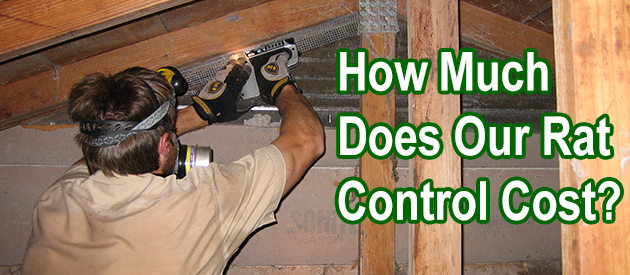Kanawha County, Charleston Rat Control Situation:
Hello David. I have a problem at my West Virginia home & not quite sure how to resolve it. I hear scratching noises between a wall in my house. I believe it's a rat. How do I get it out?
Thanks for your useful information about rat in the attic. I have tried to find and seal up all entry points as possible, but the rats still can get into the attic once in a while. You mentioned about vent, and I'm thinking about the roof splashing vent from the bathroom. There is big space under the "umbrella" covering the opening of the splash and I wonder if they can climb or jump up and get into the attic. Please advise. Thanks.
Hi David, I enjoy your website. It is very informative. I found your website after noticing a couple pieces of rat feces in the attic and, what looked like a hole burrowing down in the insulation. I got paranoid, and set a trap with peanut butter but have not caught anything in 4 days. I did not think there were any entry areas as our roof was just replaced a few moths ago, BUT after I did an inspection I did find what looked like a half-circle chewed where the wood meets brick. I couldn't believe it! I patched that with steel the next day and became paranoid there were other holes. After a complete roof inspection I found a couple gaps between brick and wood that could be entry points. I completely repaired/closed all entry points... My question is how long should I leave that trap in the attic if I haven't caught anything? I don't think that rat stayed in the attic???? Thanks again and very informative website!
My name is Julio and I am worried becuase I always hear running noises in my bedroom cieling. How do I get rid of these mice . Where should I look for holes ? Can I call an rodent exterminater. Thank for the article.
Charleston Rat Control Tip of The Week
Why Do Rats Chew On Wires?
Insulation, wires, straw, cardboard, paper, and different materials assist rodents with survival because they can utilize any of those things to build bigger homes, hone their teeth, and more.
Rats find it a lot simpler to chew wires, cable, wood, and even water warming pipes than most other materials because of their teeth. The chewing of wires and cables by rats has been identified as one of the main sources of blackouts in some homes. Out of these materials, wires appear to be the most attractive to rats and mice.
Why Do They Chew On Wires?
Let's review the most common issues relating to rats chewing on wires that some homeowners face every day:- Rodents don't go around searching for wires to chew on. They happen to get a kick out of the chance to stow away in places where other shrouded things are commonly found, for example, your home electric and security wiring system.
- One thing with wires is that they are all over the place, and rats have a nature to follow anything they can bite to keep their teeth from over developing. If they don't bite on wires, they will, in the long run, bite on everything else: glass, plastic, elastic, wood, aluminum, rock, and even concrete.
- Even though rats can chew anything, they love wire more when it comes to grinding their teeth. They can hold the wire as they chew, giving them more control. As you most likely know, rats and mice have sharp teeth, which keep growing unless they find a way to control the growth. This is why they choose wires.
- Keep in mind that rats and mice don't just chew on house wires. They also chew vehicle wires.


